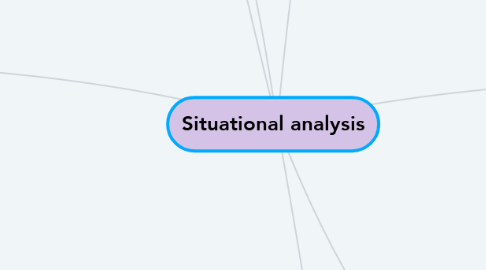
1. Definition
1.1. Structured process done before curriculum formulation
1.2. Data collection and analysis wrt current and future trends
1.3. Context conclusion making
2. Required data and information
2.1. External factors
2.1.1. Community
2.1.1.1. Constitutional
2.1.1.1.1. Constitution, HSE authorities, Educational Structures, HSE relations, HC delivery structures
2.1.1.2. Statutory
2.1.1.2.1. Educational and HC legislation and policies, regulating bodies
2.1.1.3. Political
2.1.1.3.1. Political forces, social pressure groups; e.g. trade unions
2.1.1.4. Economic
2.1.1.4.1. International - globalization and national trends.
2.1.1.5. Technological
2.1.1.5.1. International and national advances
2.1.1.6. Demographic
2.1.1.6.1. Population patterns and HC trends
2.1.2. Learner
2.1.2.1. Level of school education
2.1.2.2. strengths and weaknesses of general educational system
2.1.2.3. Learner needs and expectations
2.1.3. Subject discipline
2.1.3.1. Development in science and technology
2.2. Internal factors
2.2.1. Educational ethos
2.2.2. Learner issues
2.2.3. Resources
2.2.3.1. Material
2.2.3.2. Huma
3. Interpretation of findings
3.1. Systematic analysis and synthesis
3.1.1. Collected data
3.2. Analysis Strategy
3.3. SWOT Analysis
3.3.1. Collected data
3.3.2. Identifying weaknesses and strenghts
3.3.3. Opportunities and threats
4. Purpose
4.1. Provide data and information
4.2. Respond to social realities and dangers
4.3. Determine trends and needs
4.4. Make future projection
4.5. Close the gap
4.6. Testing ideas
5. Determinants
5.1. Community
5.1.1. Prevent health problems
5.1.2. Social and cultural realities
5.1.3. Professional & Cultural investigation
5.2. Subject discipline
5.2.1. Analysis
5.2.2. Explore & investigate subject matter
5.2.3. Scientific and technology investigation
5.2.4. Adapt to change
5.3. Learners
5.3.1. Needs and demands
5.3.2. Educational needs
5.3.3. Political demands
5.3.4. Interactive needs

